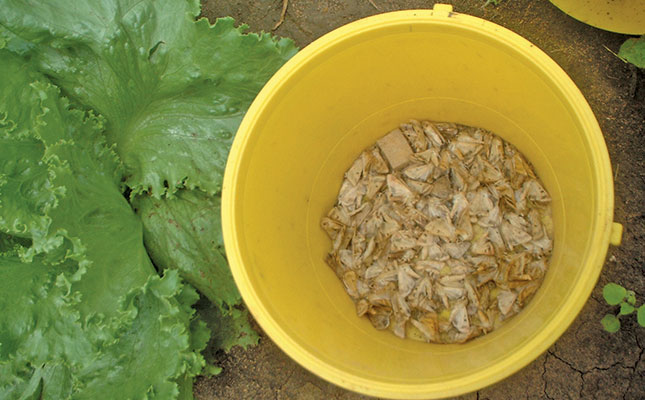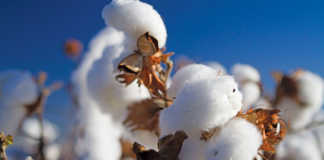
Photo: Bill Kerr
The African bollworm (Helicoverpa armigera) is normally a sporadic pest; it tends to arrive on lettuce plants in bursts, rather than gradually increasing in number.
Every lettuce farmer is bound to encounter this pest sooner or later. This is due to its extremely wide host range, which includes most vegetables and a number of weed species.
The bollworm is therefore likely to have a food source in almost every area
Sudden arrival
The moths emerge from their pupae, which are a few centimetres underground, in spring with the rising temperatures.
This is a particularly dangerous period, as the pest has not been around for many months and it is easy to be caught off guard.
In addition, with the temperature favouring emergence, a large number of moths will appear at once, causing much damage in a short time.
Lettuce is particularly vulnerable to bollworm. The young caterpillars bore through the heading leaves, creating only a small hole in the outer heading leaf in the process; they then proceed to do the real damage out of sight.
This creates two problems: you won’t notice the caterpillars unless you look for them, and they cannot be reached with pesticide.
Timing is therefore crucial; you need to spray the crop before the caterpillars burrow their way to safety.
Targeting the moths
The bollworm moth is an orange-brown colour with indistinct darker markings on its wings. An outside light will attract them, and is useful for checking for their presence.
A moth lays, on average, about 1 500 eggs, placing them randomly on the plants. The newly hatched caterpillars are dark in colour with stripes on the sides. As they grow older, they take on the colour of the leaves and are difficult to spot.
Some farmers prefer to apply a weekly spray programme to ensure that the crop is protected. The problem, though, is that this ties up a tractor and increases cost. Rather determine when the moths are active, then control the caterpillars when they are young and more susceptible to the insecticide, and before they drill into the developing lettuce heads.
By far the best way to determine when to spray is to set a few pheromone traps around the land.
These come in various forms, but all have an attractant that mimics the pheromone released by the female when ready to mate.
The idea is not necessarily to reduce the number of moths on the land, but to indicate when they are active. In this way, you can time the spraying for best effect. The eggs will take a few days to hatch, so you have some leeway.
Protecting predators
It is far better to use an insecticide that does not harm beneficial insects. This applies not only to beneficial insects that control bollworm, but also to the parasitoids that control another serious pest, the leaf miner.
Bill Kerr is a vegetable specialist and a breeder of a range of vegetables.











